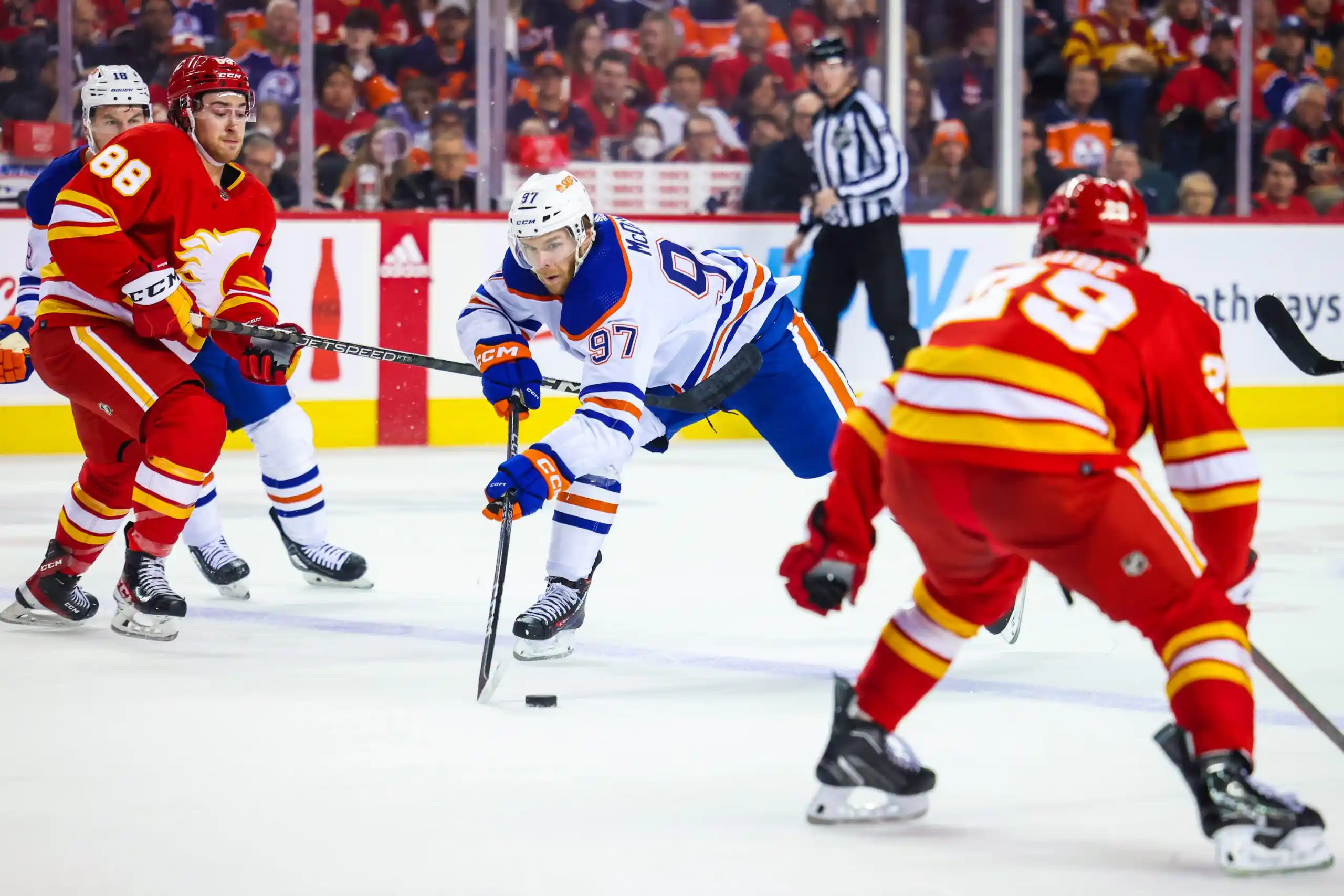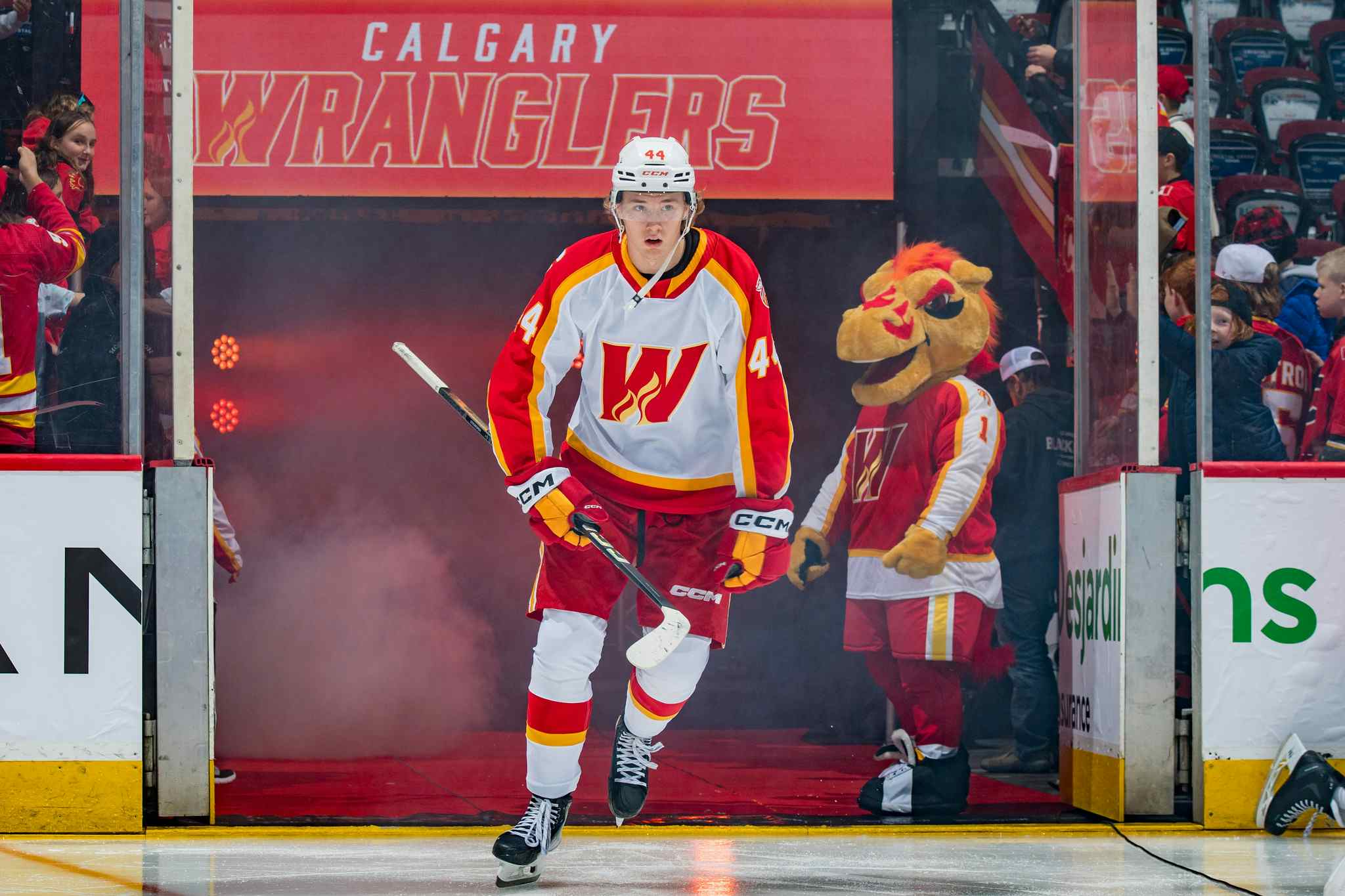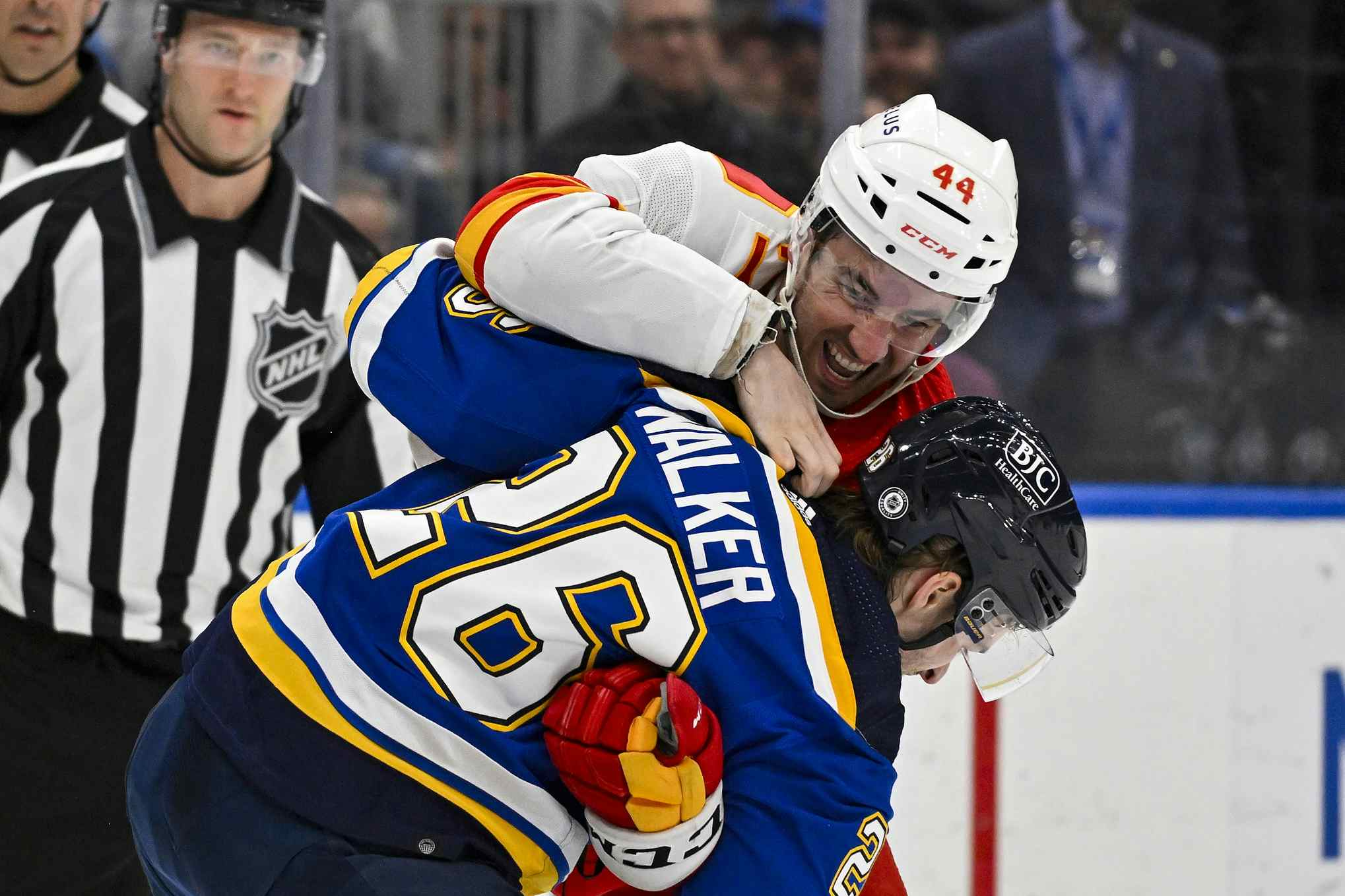Flames Cap Situation Moving Forward
By Kent Wilson
8 years agoThe Calgary Flames had so much cap space heading into 2013-14 they were actively looking for ways to acquire other club’s bad deals in return for assets. This coming year, even with raises to a bunch of pending RFA’s and a free agent signing or two, the org will still be south of the cap ceiling.
The sense is that the Flames have a lot of budget to work with, but the truth is more complicated than that if we look two years down the road. We’re reading tea leaves a bit, but it’s possible for the Calgary’s cap situation goes from casual to dire in the space of a couple of the seasons. That’s relevant now because implications may well stretch backwards to influence their decision making this summer.
Flames Cap Next 3 Seasons

Here’s how things look starting next season. All numbers via NHLNumbers.
The red squares represent current Flames players who will go UFA down the road (and, I assume, will not be retained by the team). The player cap hits highlighted in green represent guys I would consider expendable given the team’s needs and their performance vs. salary ratio. I have given what I consider reasonable raises to guys who will likely stick around.
The salary cap increases by an assumed 5% in 2016-17 and 2017-18 which might actually be optimistic.
Next year
Assuming the Flames sign Mikael Backlund ($4.0M), Lance Bouma ($2.75M), a forward free agent (Byron or a Byron replacement at $1.75) and a blueline free agent ($4.5M), Calgary should still be around $5M clear of the cap ceiling. We don’t yet know if Ladislav Smid will be moved to LTIR indefinitely or not, so for now we will include his cap hit. You will also notice the rookie’s cap hits include all of their bonus dollars to be safe.
Clearly the club still has budget room to play with in the upcoming season. The problems begin the year after that.
2016-17 and Onwards
This is when a lot of the really big raises start to kick in. If my assumptions for Mark Giordano ($7.5M), Johnny Gaudreau ($6.0M), Sean Monahan ($6.0) and Jiri Hudler or a Hudler replacement ($5.75M) are in the ballpark, Calgary’s forward corps suddenly get about $10M more expensive over the previous season. When you add in Giordano’s probable kick up to $7M+ and a raise for Kris Russell, the Flames are suddenly almost $7M over my proposed cap of $82M, even if Joni Ortio is Calgary’s cheapish starter at $3M.
Things get a little looser for the team in 2017-18 with the removal of Smid, Engelland and Wideman from the roster, but even then the club is scraping up against the cap ceiling (assuming the club adds at least one more $5M defender to plug the hole).
Discussion
Having a lot of good young players is a good problem to have for a rebuilding team. That said, it is still a problem and one the team will have to face probably a lot sooner than many would have anticipated just 12 months ago.
Here’s some the implications that jump out to me when I look at Calgary’s salary graph.
1.) Get competitive soon
Probably the worst case scenario for a rebuilding club is having to pay a bunch of young talent while not actually being competitive. Just look a few hours north to see how problematic it can be to be a bottom barrel cap team.
Due to certain circumstances, Calgary is only getting two ELC years out of Sam Bennett and Johnny Gaudreau. On top of that, established veterans like Giordano, Brodie, Backlund are set to get paid a lot more than they were making very soon. All this means the Flames are poised to have the the salary of a contender within a couple of seasons. They should aim to have the performance to match.
How do they do that? Beyond natural progression from the kids, they’ll need at least 2 more capable defenders at even strength and a couple of decent RWers, at least one of whom is excellent-to-elite. These considerations should start to guide the org’s budget management and player acquisition decisions starting this summer.
2.) Smid has to go away
If the erstwhile Oiler isn’t an LTIR candidate, then the Flames front office has to find a way to get his money off the books one way or the other. Even if he is able to get back on the ice, his dollars and performance are grossly discordant. The team is going to need to put that cap space to better use very soon.
3.) Start shopping the expendables
The team should start to test the market for many of the guys marked in green above. There isn’t a huge impetus to move Bollig since his deal ends after this upcoming season (aside from the fact he’s redundant), but eventually the Flames aren’t going to be able to afford to pay support guys more than they are worth.
The prime candidates are Deryk Engelland and Mason Raymond this year, particularly Raymond given how crowded the bottom of the Flames roster is (and how little the coaching staff trusts him). Freeing up his dollars will be important when the kids get their second contracts. Engelland is a guy who could be phased out the year after depending on how the blueline depth is looking.
Similarly, Matt Stajan might start to seem like an expensive appendix come 2016-17. I think he’s a useful guy for one more season, but after that it will be hard to justify paying him over $3M to (more than likely) play fourth line minutes.
4.) Consider shopping Dennis Wideman
If the Flames manage to shore up the blueline over the next couple of summers (which should be their primary concern), Dennis Wideman is going to be paid a lot of money to be a PP specialist. His heroic turn this year has no doubt resurrected his previously flagging trade market value, so it might be advisable for the Flames to trade him sooner rather that later.
It’s a near certainty that Wideman won’t replicate his offensive totals from this season (he turns 33 next year and enjoyed a career high SH%) and any kind of meaningful downturn will crater his perceived value given his contract. If Brad Treliving is savvy, he could probably spend those dollars more efficiently on a younger player with more upside.
As such, Calgary should at least test the market to see what kind of offers they can get for him.
Conclusion
The big 2014-15 season for many of the Calgary players has given hope back to a moribund franchise. It also was the start of a ticking clock on their cap budget flexibility. Treliving has the buffer of this upcoming summer and regular season to prepare, but he could be facing some much tougher decisions come the off-season of 2016.
Recent articles from Kent Wilson





